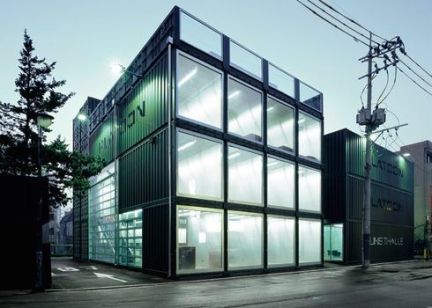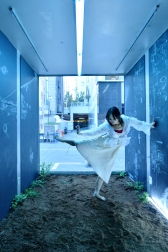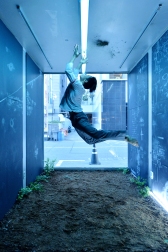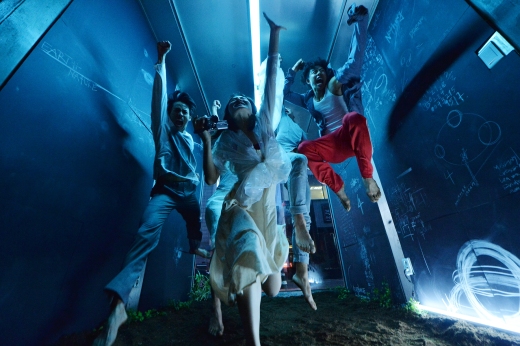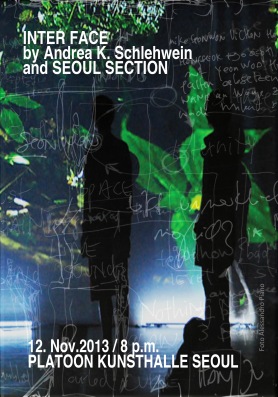Following a summer of dance + art – which included numerous multimedial collaborations, performances by NETZWERK AKS and guests, and the new production wozzeck_woyzeck_reloaded – at the NETZWERK AKS / platform for contemporary Dance + Art homebase in Millstatt, AKS returned for a second round as Guest Professor for Dance Creation and Choreography at the Korea National University of Arts in Seoul this September; the end of her one-semester stay approaches quickly in December.
Aside from teaching and choreographing at the university, AKS is tutoring two classes of twelve young choreographers each, guiding these students as they develop their own works for performance in mid-December.
Apart from her activities at the University, AKS has founded a new dance company, SEOUL SECTION, which acts as the sister company of NETZWERK AKS. Both Seoul Section and NETZWERK AKS are platforms that foster multimedial collaboration. The individual dancers, visual artists, sound designers etc. participating in each of these ensembles are professional freelancers, and both companies rely on the büro für tanz | theater | produktionen for organization and infrastructure.
Whether the sister companies will come together for a production in the near future remains to be seen, but in the meantime SEOUL SECTION gave its premiere performance,INTER FACE / life in a box, from 12. to 25. November (including 2 performances and a standing installation). SEOUL SECTION presented the work on invitation at Platoon KunstHalle Seoul to open the Special Showcase Reboot: Media Future Shock!. The showcase brought several artists of varying media together to collaborate, thereby “expand[ing] their field of art through communication … .” Platoon KunstHalle, a worlwide network with headquarters in Seoul and Berlin, naturally supports this theme; their website boasts that amidst today’s “communication war” of technology and advertising, the venue provides a space for artists of different expressions to “combine commerce, communication, art and culture to endorse freedom of human mind as a communication consultancy.” Thus, occasion and venue proved fitting for AKS, who constantly seeks out opportunities for intercultural and interdisciplinary dialogue.
She explored ideas of communication in her fashion: by creating a multimedial work that takes the audience on a journey through a space instead of planting them comfortably in seats, making them active participants rather than outside viewers. In this case, AKS took advantage of a “virtual garden” and it filled with film, sound and a box containing the dancers themselves.
Five people occupying a small space together find it difficult to breathe, not easy to define borders and challenging to protect privacy. Under constant pressure to defend intimate moments, preemptive attack often seems the best method to bury tension under a cover of “peace.” Communication occurs from surface to surface without deeper resonance. The system constantly breaks down, only to be immediately rebuilt and failing actually to change.– Paraphrase
INTER FACE / life in a box centers around the physical phenomenon that two black boxes become permeable for information exchange only upon recognition of each other’s specific surfaces. In comparing this to human dialogue, the piece demonstrates that “on this superficial level of our daily communication, we leave behind more [remnants] of destruction than [evidence] of construction and exchange.”
In a more celebratory nod to the idea of communication, the performance of INTER FACE / life in a box honored 50 / 120 years of diplomatic relations between Austria and South Korea; in organizing the project, AKS served as an Austrian artistic ambassador in Korea. The work was supported by the Austrian Embassy Seoul and BMEIA (Federal Ministry for European and International Affairs). 600 viewers saw INTER FACE / life in a box, and the piece is said to have “struck a nerve” with Korean audiences.
The plans of AKS upon her return to and the coming season in Carinthia will be revealed in a future post.

